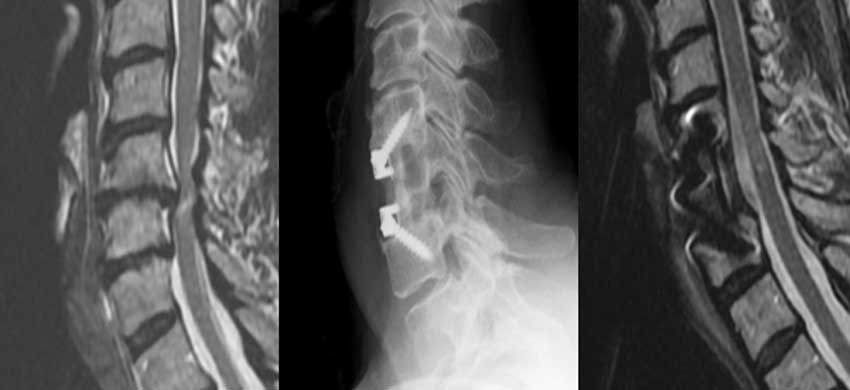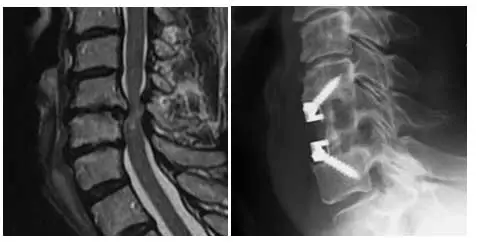
Cervical Corporectomy
When the cervical disease encompasses more than just the disc space, your surgeon may recommend removal of the vertebral body as well as the disc spaces at either end to completely decompress the cervical canal. This procedure, a cervical corpectomy, is often done for multi-level cervical stenosis with spinal cord compression caused by bone spur (osteophytes) growth.
How is Anterior Cervical Corpectomy Performed?
In general, the procedure for anterior cervical corpectomy surgery is as follows:
- The approach is similar to a discectomy (anterior approach); although a larger and more vertical incision in the neck will often be used to allow more extensive exposure.
- A discectomy is then performed at either end of the vertebral body that will be removed (e.g. C4-C5 and C5-C6 to remove the C5 vertebral body). More than one vertebral body may be removed.
- The posterior longitudinal ligament is often removed to allow access to the cervical canal and to ensure complete removal of the pressure on the spinal cord and/or nerve roots.
- The defect must then be reconstructed with an appropriate fusion technique.
After a corpectomy has been performed, the surgeon needs to mechanically reconstruct the defect created and to provide the long-term stability of the spine with a spinal fusion. The anterior vertebral column is reconstructed with a strut of bone or, more commonly, a ‘cage’ made of titanium or other synthetic materials, filled with morsels of bone graft. This is usually then followed by anterior instrumentation to help hold the construct together. If multiple levels are fused, a supplemental poster fusion and instrumentation may be recommended to help stabilize the spine.
Anterior Cervical Corpectomy Risks and Complications
Technically, a corpectomy is a more difficult operation to perform. Similar to a discectomy, the risks and possible complications of this surgery for cervical spinal stenosis include:
- Nerve root damage
- Damage to the spinal cord, including paralysis (quadriplegia)
- Bleeding
- Infection
- Hoarse voice (recurrent laryngeal N. palsy)
- Tracheoesophageal injury
- Vascular injury
- Graft/cage dislodgment
- Damage to the trachea/esophagus
- Reoperation
- Continued pain
However, a corpectomy is a more extensive procedure than a discectomy, so the risks are statistically greater, especially with respect to neurologic issues, bone grafting and bleeding.
A main concern is compromise of the spinal cord that can lead to complete or partial quadriplegia. Bear in mind that corpectomy operations are most often undertaken in circumstances of significant spinal cord problems, which place the cord at greater risk for problems during surgery, independent of the skill and finesse with which the procedure is performed.
